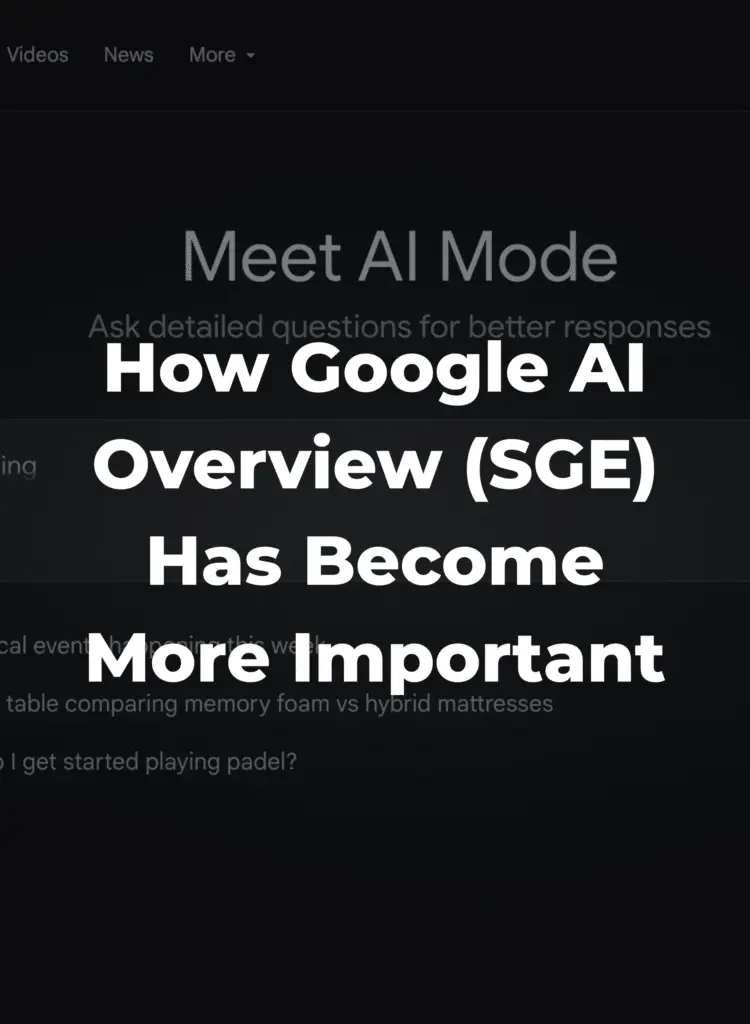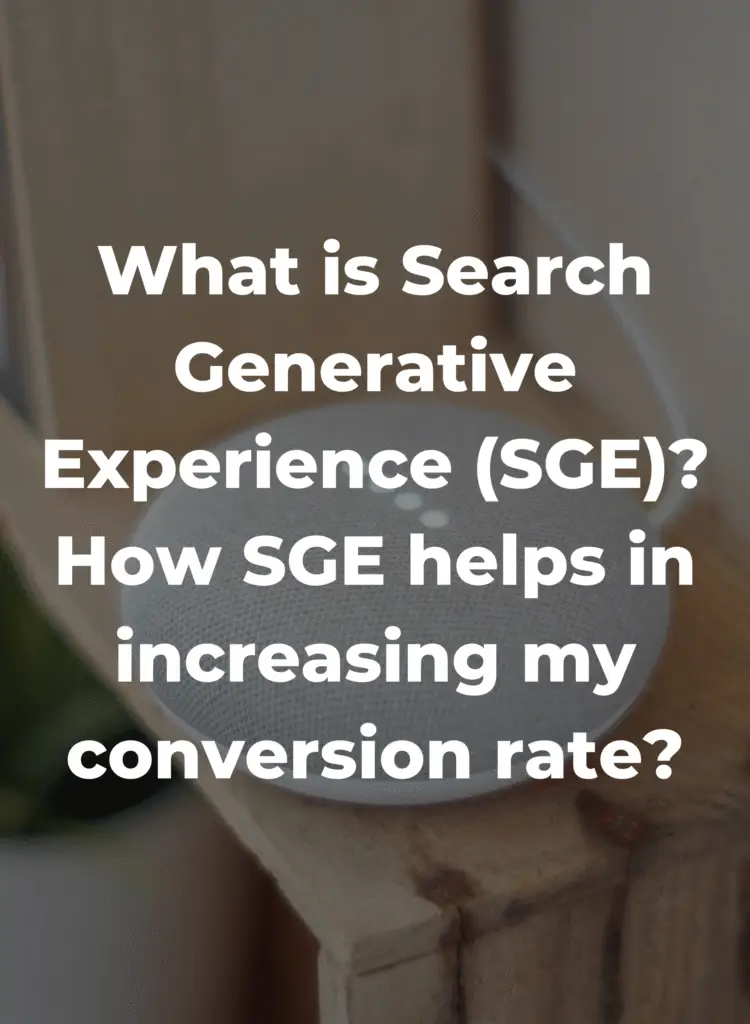Discover how AEO (Answer Engine Optimization) and GEO can help your Malaysian SME win in the AI search era. Learn why a consultant is essential to navigating this shift and download our free site audit checklist.
The Seismic Shift from Search Engines to Answer Engines
The digital landscape has undergone a profound transformation. For decades, the primary objective of online marketing has been Search Engine Optimization, or SEO, a discipline that focused on securing top-ranking positions on search engine results pages (SERPs). A successful SEO strategy traditionally involved a meticulous process of keyword targeting, building authoritative backlinks, and implementing technical improvements to climb the organic ranking ladder. However, this established paradigm is now giving way to a new era of AI-powered conversational search platforms and large language models (LLMs).
This fundamental shift is leading to a new strategic approach known as Answer Engine Optimization (AEO) and Generative Engine Optimization (GEO). Users are increasingly moving away from manually clicking on links to find answers and are instead receiving direct, synthesized responses from AI-driven platforms like Google’s AI Overviews, ChatGPT, Gemini, and Claude. This change in user behavior is redefining what it means to be visible online. It’s no longer just about where a website ranks in a list of results; it’s about being the definitive, cited answer.
Clarifying the New Terminology: AEO, GEO, and Why It Matters
To fully understand this new paradigm, it is crucial to first clarify the terminology. While the acronym AEO may appear straightforward, it has two distinct meanings, and a professional must be clear about the context. In a trade and logistics context, AEO stands for “Authorized Economic Operator,” a customs compliance certification aimed at enhancing supply chain security. For the purpose of digital marketing and content strategy, AEO refers to Answer Engine Optimization. This is the process of optimizing content so that AI-powered search platforms can easily interpret, extract, and deliver a precise, contextually correct answer directly to a user.
An even more modern and specialized subset of AEO is Generative Engine Optimisation (GEO). GEO is an optimization tactic specifically focused on creating content that not only engages human readers but also resonates with AI-driven search engines. It is the act of structuring and enriching a website’s content to be better suited for scanning by large language models (LLMs), which then use this optimized material as a source to formulate their answers. The objective of GEO is to influence the initial response from an LLM, causing it to lean more favorably toward a specific brand’s content.
The core difference between traditional SEO and this new AEO/GEO paradigm lies in their ultimate objective. Traditional SEO is a battle for ranking positions on a SERP, with success measured by the number of clicks and website traffic generated. Conversely, AEO and GEO shift the focus to earning a “citation” or being quoted directly in an AI-generated response, even if the user never clicks on the website link. This is often referred to as a “zero-click” search outcome, and it requires a fundamental re-evaluation of how digital success is measured.
The following table provides a concise comparison of these two distinct strategic approaches.

The Imperative for Malaysian SMEs: A Local Perspective on a Global Trend
The global shift toward AI-powered search is particularly urgent for businesses in Malaysia, where small and medium enterprises (SMEs) are the backbone of the nation’s economy, representing an astonishing 98.5% of all business establishments. Despite their critical role, many Malaysian SMEs face significant challenges in digital adoption, including high initial investment costs, limited digital literacy, and a reliance on vendor recommendations rather than in-house talent. This has resulted in a concerning trend where only one in 20 SMEs in Malaysia has initiated digital transformation strategies.
This digital gap presents a distinct vulnerability in the age of AI search. If a business’s content is not optimized for AEO, it risks being entirely invisible in AI-generated summaries, even if its traditional SEO rankings are strong. As users increasingly expect fast, accurate answers, they may never see a brand that is not cited by an AI engine. This creates a situation where a potential customer could have their purchasing decision influenced by a competitor’s content that is favored by an AI, all without ever visiting a website.
The Malaysian market also introduces unique nuances that make AEO and GEO not just a forward-thinking strategy, but an immediate necessity. Google dominates the search landscape in Malaysia with a market share of 97% to 98% , making it the central focus of any optimization effort. However, unlike more homogenous markets, Malaysia’s multi-ethnic and multilingual environment requires a nuanced approach. Content must be tailored to specific demographic segments, such as Malay, Chinese, or Indian audiences, with each group potentially requiring different keyword strategies, cultural expressions, and linguistic nuances. A simple word-for-word translation is often insufficient and can lead to a lack of visibility.
Furthermore, Malaysian users are highly engaged on mobile devices, spending approximately one-third of their day on the internet and showing a strong preference for visual-forward designs that are easy to consume on smaller screens. This mobile-first imperative perfectly aligns with the principles of AEO/GEO, which prioritize clear, concise, and structured content that is easily scannable by both machines and humans. The need to create simplified, multi-language content is not just a best practice; it’s a critical requirement for reaching Malaysia’s diverse, mobile-savvy audience.
Strategic Validation: The Profound Funding Case Study
The shift from traditional SEO to AI-powered optimization is not a distant trend; it is a live and high-stakes transformation happening now. The most compelling evidence of this is the recent financial market validation of companies dedicated to this new paradigm. A prime example is Profound, a New York City-based company that secured a substantial $35 million in a Series B funding round. This investment was led by Sequoia Capital, with continued participation from top-tier venture firms like Kleiner Perkins. This is not a random investment; it represents a strategic bet by a major player on a “once-in-a-generation platform shift”.
Profound’s cofounder, James Cadwallader, characterized this change as a “Game of Thrones power shift” away from traditional SEO tactics that have been dominant for decades. The company’s platform is designed to address this by enabling brands to monitor and actively optimize their visibility within AI-generated search results. The core insight that has propelled Profound’s success is the recognition that brands must now “create content for bots”. This content is highly structured and designed for machine consumption, unlike traditional content aimed solely at human readers.
This financial and strategic validation is supported by powerful metrics that quantify the urgency of the change.

These statistics transform the abstract concept of AI search into a concrete business challenge. The discussion moves from a tactical marketing issue to a strategic, boardroom-level concern that impacts “revenue generation, customer acquisition strategies, competitive positioning, and and brand identity”. The Profound case study provides irrefutable proof that this is no longer a fringe idea, but a mainstream, high-stakes trend that requires immediate attention and investment to avoid being left behind.
Your Path to AI-Readiness
As the digital landscape evolves, the role of a consultant also transforms. An AEO consultant for a Malaysian SME is not merely a vendor but a strategic partner who can help navigate the complex transition from traditional SEO to AI search dominance. This professional guidance is essential for businesses that may lack the in-house digital literacy or resources to adapt on their own.
A comprehensive AEO strategy is a multi-faceted approach that builds upon the foundation of traditional SEO while layering on new, AI-specific principles. The core elements of this blueprint include:
Search Intent Clarity: An effective strategy goes beyond simply targeting keywords and instead focuses on understanding what users are truly asking. An AEO consultant works to ensure that content provides a clear, direct, and intent-matching response within the first few sentences, making it more likely to be extracted and cited by an AI engine.
Structured Content: AI models favor content that is well-organized and easy to interpret. A consultant helps businesses structure their content using descriptive headings (
H2sandH3s), bullet points, tables, and short, readable paragraphs. This formatting not only improves user experience but also increases the likelihood that an answer engine will identify and cite the relevant section of a page.Semantic Richness and Authority: AI engines prioritize high-quality, credible sources. A consultant guides the creation of content that uses related terminology and contextual explanations. This includes linking to authoritative external sources such as academic research, government data, or industry reports and including author bylines with relevant credentials to demonstrate expertise, authoritativeness, and trustworthiness (E-A-T).
Technical SEO Foundation: AEO is not a replacement for traditional technical SEO. A solid technical foundation is a prerequisite for success. A consultant ensures a site is crawlable, mobile-friendly, fast-loading, and free of major errors. The proper implementation of structured data and schema markup, especially for FAQs, how-to guides, and definitions, helps both AI and search bots accurately index and parse content.
This holistic approach ensures that a business is visible and relevant in both traditional search results and the new frontier of AI-generated answers.
Ready To Elevate Your Online Presence?
To help SME owners begin their AEO journey, a basic, actionable site audit checklist can serve as a valuable first step. This preliminary guide allows a business owner to gauge their site’s “AI-readiness” and identify key areas for improvement.




